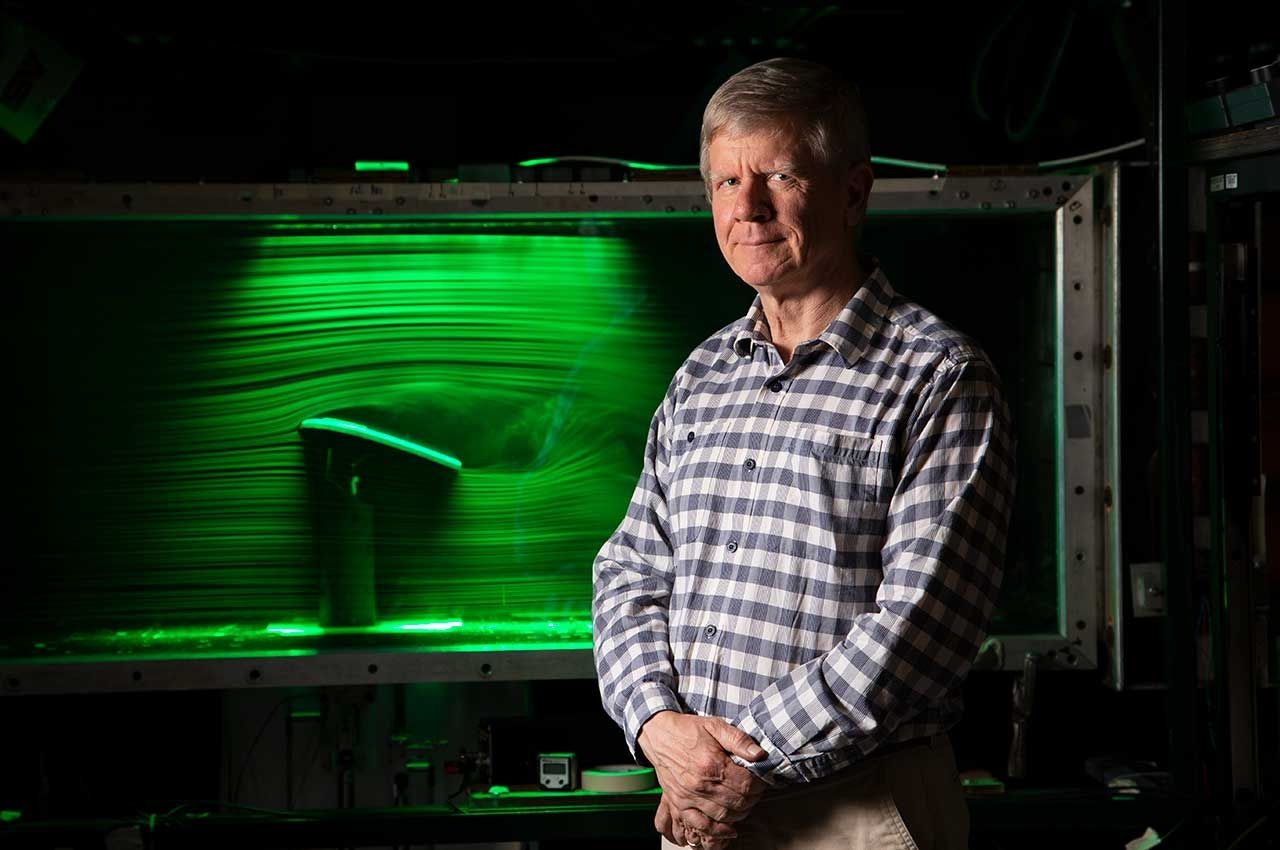We reach more than 65,000 registered users in Dec!! Register Now

Illinois Tech Professor Demonstrates Novel Control Method in Aircraft with No Tail
- February 17, 2023
- 47 Views
- 0 Likes
- 0 Comment
Technology developed by Mechanical and Aerospace Engineering Professor David Williams could lead to aircraft that avoid radar detection, more fuel-efficient planes
A research team at Illinois Institute of Technology (Illinois Tech), led by Professor David Williams, has for the first time demonstrated the use of a novel control method in an aircraft with no tail. The technology allows an aircraft to be as smooth and sleek as possible, making it safer to fly in dangerous areas where radar scans the sky for sharp edges.
While conventional aircraft rely on protruding fins to enable steering, a tailless design is controlled by active air flow—in which jets of air are blown onto different surfaces of the aircraft body, corresponding to which direction the aircraft is moving. This technology could be employed to make commercial airplanes more fuel-efficient by removing existing steering parts that create a lot of drag.
Williams, professor of mechanical and aerospace engineering, led a team of Illinois Tech students and collaborators in the construction of a jet that houses both conventional steering controls and a novel implementation of active flow control.
In October 2022 the group launched the jet from the Pendleton Unmanned Aircraft System (UAS) Range in Oregon for two nine-minute flights that demonstrated the success of the system.
For each flight, one pilot launched the jet using conventional flight controls. Then, midflight, they switched control to a second pilot who operated the active flow control system.
In the first test, the team found that the active flow control system actually provided more power than had been predicted from wind tunnel tests.
“In engineering, it never works that way, you almost always get less than you were hoping for, but in this case, we got more,” says Williams. “The first day was very dramatic. It was very strong and very scary. If the jet gets too far over on its side, it could spin out of control. In fact, it did go over to 90 degrees, but it recovered.”
Once the pilot gained confidence in their ability to control the craft, they executed roll and pitch maneuvers to test the active flow control’s ability to steer the jet at steep angles.
An advantage of active flow control is that it has the potential to allow for maneuvers that are impossible with conventional controls, including very fast turns and the ability to fly at angles that would cause conventional controls to become ineffective.
Williams says the unexpected power of their system has increased his confidence that they will be able to do these more advanced maneuvers with this jet.
For their second flight, Williams reduced the power to the active flow control system for a safer, more stable flight, allowing them to collect more data about how the active flow control was operating.
The active flow control is implemented using a patent-pending Coanda valve designed by Williams and his students, and this was their first chance to show the design’s success on an aircraft.
Williams says the team will be conducting more flight tests, gradually building toward using the active flow control during takeoff and conducting more extreme control maneuvers.
“We’ve made the breakthrough that I was looking for,” says Williams. “Now future tests will start adding to the accomplishments and confidence in the airplane’s design.”
Williams is a member of a NATO working group that received the organization’s 2021 Excellence Award for its efforts in this area.
Disclaimer: “Research reported in this publication was supported by the National Aeronautics and Space Administration under Award Number 19-SG2020-2-0046 and the Office of Naval Research under Award Number N00014-22-1-2552. This content is solely the responsibility of the authors and does not necessarily represent the official views of the National Aeronautics and Space Administration or the Office of Naval Research.”
Cite This Article as
No tags found for this post









